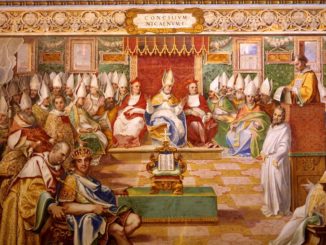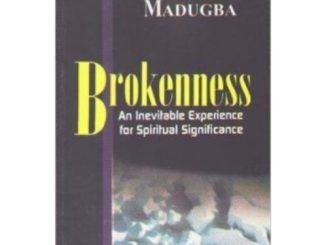
In the common psyche Obeah and Santeria are not linked. Obeah is viewed as hailing from an English-speaking, African and Protestant tradition while Santeria is seen as derived from a Spanish-speaking, African and Catholic tradition. The unifying element is the African tradition surviving the diaspora that persisted in both, resulting in similarities in Santeria and Obeah despite the modern culture and language barrier.
A center of many Obeah traditions is that of Eshu, as known in Obeah, or Eleggua in Spanish Santeria. There are traditions in both that recognize names mutually as well. For example, many Santeros know of Eleggua as Eshu just like the Obi men. Eshu also appears as Exu in Brazilian Candomble and Papa Legba in Vodou. A final note that must be said is that this does not imply the spirits are identical; this is one possibility, but they could equally be a series of related, or flange, spirits that survived during the African diaspora.
The tradition of Eshu is Yoruba in origin. There are some people who will say Eshu is a trickster or a prankster, but this is not the nature of Eshu. Eshu is the gatekeeper. He allows for any spiritual forces to enter into the material world. He also allows for us to interact with the spiritual world. Thus, all psychic ability comes from Eshu.
Santeria does view Eshu differently. Eshu (or Eleggua) is grouped as a warrior in the Santeria tradition along with two other spirits, Ogun and Oshkosh. In Obeah practice there is no tradition of receiving these three spirits as warriors, or guerreros. Instead, they are petitioned directly from an early period of practice in Obeah.
The nature of Eshu is viewed differently in Trinidadian Obeah as well. More akin to the Vodou concept of Papa Legba, Eshu is seen as a neutral gatekeeper. Although Eshu can be compelled for peace or war, it is not believed to be in his nature as seen in the Santeria tradition. Eshu does feature an equally prominent role in other respects. And that is the point. That despite the proceeding differences, ultimately it is Eshu at the heart of both Santeria and Obeah.
A major difference between both spiritual groups in practice is that of hierarchy. Santeria has traditionally held much more importance on the lineage of a series of magical traditions, as well as having a large branch of practitioners. The most famous Obeah man in the English-speaking Caribbean, for example, might be Three-Fingered Jack, a slave who used Obeah to escape a plantation and form a Maroon colony in liberty. The most famous Santeria on the other hand might be Oba Ernesto Pichardo, who founded the Church of Lukumi Babalu Aye and won a United States Supreme Court decision to allow Santeros to practice their religious obligations (in Church of Lukumi Babalu Aye v. City of Hialeah, 508 U.S. 520). A Santero is more likely to be a public figure while an Obeah man an individual on the outskirts.
The cultural variance in how Santeria is viewed in Cuba – widely accepted – while Obeah in Trinidad is widely practiced but outwardly shamed may be the result of this. The Obeah man is feared while the Santero often is a source of comfort in the community. It may simply be that Santeria is more acceptable in Cuban culture or it may be that there is something about Obeah that demands more from the practitioner.
The end result is that Obeah is not transmitted as Santeria is in Cuba. A person would traditionally not seek out an Obeah man to learn; this would be hereditary, passing on from generations. In contrast, the Santeros of Santeria would be initiated upwards through the ranks as their spiritual ability developed.
Despite the differences, both Obeah and Santeria share a core belief in Eshu. Similarly, there are many secret ritual practices taught to initiates that resemble one another. The two religions are clearly distinct, both in essence and at first sight. However, the fundamental spiritual forces behind both are similar in nature and testify to the validity of actual powers emanating from the spirits of the Yoruba tradition.
Proudly WWW.PONIREVO.COM
Source by Ebenezer White



